Stories To Tell Books BLOG
Filtering by Category: Collaboration
Save Your Public Library!
Biff Barnes
New Ways to Tell Stories With Tech Tools
Biff Barnes
Creating a Manuscript - Think Ahead in Word
Nan Barnes
Who Should Illustrate My Children's Book?
Biff Barnes
A New Tool for Authors to Manage Collaborative Writing Projects
Biff Barnes
Reassure Your Relatives
Nan Barnes
What do you do if a family member is concerned about being listed in your family history book? This question comes up frequently, and together with client Marsha Allen, we devised a form letter to be sent to skeptical relations to solve the problem. Thanks, Marsha, for offering your records as examples.
First, we explain how genealogic records are recorded. Often, the relatives who distrust family histories are the ones who know the least about it. So we want to reassure them that we are following a tried and true format, one that every other researcher uses.
In many cases, the objection is based on a fear of identity theft. To alleviate that fear, we point out that this is information we have located through public records – we are not disclosing something “secret”. In fact, a cursory internet search will often turn up far more.
Next, we give an example of the record we wish to include. In many cases, the listing itself is enough to reassure the doubter. They will see for themselves how mundane these facts are, and that their family skeletons are not present here!
Last, we give them an “opt out”, with specific instructions for the actions they should take to modify the record. This puts the ball in their court, requiring a written response. In the same way that banks make your privacy policy a “passive opt-in”, the author offers to change the book only if a relative objects in writing. Those few people can specify which elements of the listing will be edited.
Most people, upon receiving this letter, will be satisfied that the author knows what she is doing! Those who had some concern will feel “heard” and be reassured; many will not care enough to take action. If you have a vehement objector, you have listened respectfully, and provided them with information and an appropriate action to take.
This win-win approach should settle any ruffled feathers among family members. Although you don’t need to send a letter like this to everyone, it is a helpful way to reach out to the few who may criticize, rather than applaud, your forthcoming book.
Sample Letter
Dear _______
Thank you for the interest in the family history book I am writing. It will be called _____ and will be about _____________.
Genealogy uses documents that are in the public record. Birth, marriage and death records are catalogued by software databases for family lines worldwide. As I have worked on my book, I have adhered to the traditional format and standards used by professional genealogists. For example, here is the listing of my own father: (Insert a sample record from your family here)
GOLD, Everett Van Orden b. 6 Sep 1910 Salt Lake City, Salt Lake, UT; s/o Cyrus William GOLD & Annie Alazana PECK; m. 3 Sep 1938 Cristobal, Panama Canal Zone to Thelma Lucille GRUBER; d. 9 Mar 1996 Scottsdale, Maricopa, AZ.
Here is a record of a living person, one of my own sons, as an incomplete record sample: (Insert a sample record from your family here)
ALLEN, Byron b. 1972 AZ; s/o David ALLEN & Marsha GOLD; m. Janice GALE.
The above living person would be listed in a complete record as: (Insert a sample record from your family here)
ALLEN, Byron Frihoff b. 17 Jan 1972 Mesa, Maricopa, AZ; s/o David K. ALLEN & Marsha Jean GOLD; m. 17 Nov 1994 Chandler, Maricopa, AZ to Janice GALE.
I understand that you have concerns about identity theft. Although this information is available in public documents elsewhere, if you prefer, I will edit your record to protect your privacy.
Now that you have been informed of what the complete record would state in the book, if you wish to limit your record, please mail me to identify which facts you do not want to be published.
Do not include for ______________________(name)
______ middle name
______ birth - date and month
______ birth - city and county
______ marriage - date
______ marriage - location
Thank you for helping me to contribute to our family’s history in as complete a way as possible. I am sure our descendants many years from now will appreciate knowing about all of us.
Respectfully,
Author
Organizing a Memoir Writers’ Group
Biff Barnes
Crowdsourced mapping
Nan Barnes
I’m still reflecting on my recent trip to the Oakland Museum, and how we can apply the methods used by these curators of culture in our own learning. In my last post on the subject, I talked about their interactive timeline.
The interactive map below is another example of using the information provided by a large group. How simple – a map, and stickers. In this case, the question is, “Where did your family come from?” Yet there are other questions you might ask, such as where have you traveled to, or where did your ancestors live in the 1600’s – each of which would produce wildly different data. You can do this - anyone can.
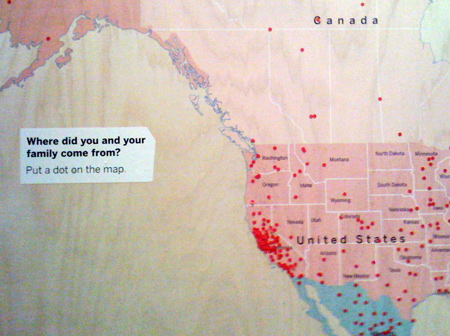
The graphic doesn’t have to be a map, either. Like the timeline I discussed earlier, these are just representations of the scope of the question we’re asking. If we want to know about places, maps are good. Time? You get it. The key is the ease with which people can give their answer. That’s what is clever here – a sticker, or a post it note is very user friendly. And the internet has made this kind of data collection even easier.
I first fell in love with the idea of crowdsourcing when Wikipedia appeared ten years ago. It seems the ideal way to tap into the knowledge of the masses. Crowdsourcing is controversial - in this Wikipedia article about crowdsourcing, I just discovered that Wikipedia founder Jimmy Wales objects to the term. It has a negative connotation of taking advantage of free labor. (If you have a moment, check out the article’s list of terms related to crowdsourcing, including citizen science, collective intelligence, and a new one to me – dotmocracy.
So this most commonly used term, crowdsourcing, is a misnomer. Instead, the admirable model used at the museum would be called mass collaboration, or mass cooperation. That’s what’s happening on Wikipedia, and in different iterations it’s happening everywhere else, too. I always read the user reviews on amazon.com before I buy, and I’m careful to check that the majority rated the book highly. Don’t you? I filter my Yelp! searches so that I only need to consider 4-star restaurants. My favorite use of crowdsourcing (sorry, the term is imprecise, but you know what I mean) is the excellent user reviews on newegg.com, without which I could not navigate the world of technology.
The thing that ties these examples together is the absence of “experts”. It assumes that all of us have useful knowledge to share. The charm of crowdsourcing is that no one can force people to contribute; and yet people do, willingly. We are happy to help, happy to give what knowledge we have, especially when it’s a subject we care about.
The interactive map in the museum is just the tip of the iceberg – a literal, hands-on sign that people are willing to contribute. If you want to frame a question, any question, posting it to an well-chosen internet bulletin board will gather results from masses of distant strangers – and isn’t that something to bolster your faith in humanity?
Interactive Timeline Takeaway
Nan Barnes
We were in the Bay Area this past weekend and stopped in to Oakland’s excellent museum to see how the California history exhibit has been faring in our absence. I love museums, not just for their collections, but for the art of exhibiting information itself. Reading books is nice, but even I am willing to concede that interactive learning beats all.
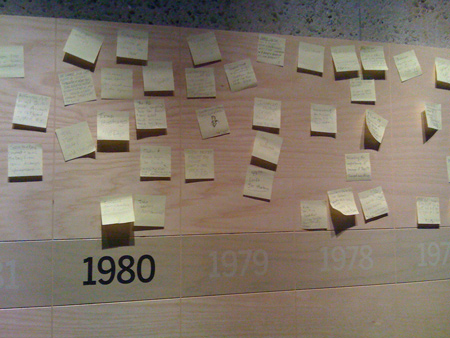 Here’s one interactive exhibit I thought was a great idea for family historians. The timeline spans a long wall, so many people can view it and post on it at the same time. Imagine their conversations as they make their choices for the most important events of the year.
Here’s one interactive exhibit I thought was a great idea for family historians. The timeline spans a long wall, so many people can view it and post on it at the same time. Imagine their conversations as they make their choices for the most important events of the year.
I can see many applications for this exercise, which could be set up temporarily and inexpensively at a family reunion, a seminar, or a book planning session. And it’s adaptable: just change the timeline to decades, for a longer-in-scope book, or to months or even weeks, for a memoir spanning a shorter period.
The key, I think, is the post-it notes. (What a brilliant invention – how did we ever live without them?) We recently suggested using index cards to get organized in one of our seminars, but some folks just couldn’t envision the color-coding. Anyone can get organized with post-its.
Every Document You Ever Needed On Your PC? Maybe!
Biff Barnes
Here in the age of the Google search it sometimes seems as if any information anywhere is available instantly after entering a few search terms and a mouse click or two. And for the most part it is. That is unless what you want is a document in an archive or a special collection somewhere. There is no database for those documents. If you’ve ever done archival research you know that first you have to locate the library, historical society or archive where the information you are looking for might be located. Then you have to travel to the archive. When you get there you will be presented with boxes or folders of documents which are sometimes handwritten and illegible. Organization is of the most general sort only, often all documents for a particular period of time, some important most irrelevant to what you are seeking. It often feels like looking for a needle in a haystack.
The reason the process is so difficult is that scholars and archivists have been unable to transcribe and publish the huge volume of documents history has left us. That may be about to change.

Scholars tasked with transcribing troves of historical documents have decided to seek help through crowd sourcing.
University College London has been transcribing the papers of Enlightenment Philosopher Jeremy Bentham for 50 years and have completed less than have of the documents in its possession. The New York Times reports that, “Starting this fall, the editors have leveraged, if not the wisdom of the crowd, then at least its fingers, inviting anyone — yes, that means you — to help transcribe some of the 40,000 unpublished manuscripts from University College’s collection that have been scanned and put online.”
The work of volunteers will be corrected by editors and eventually published.
Sharon Leon of George Mason University is working on a project to publish 55,000 War Department documents destroyed when the British burned the capitol during the War of 1812. To further the project she has received a National Endowment for the Humanities grant to create a digital tool that any library or archive could make available to enlist public assistance in transcribing documents.
Max J. Evans, the former executive director of the National Historical Publications and Records Commission applauds the effort. “This way, at least, the papers of the founding fathers and others, despite being tough to read and unsearchable, would not be ‘held up in these scholarly editing offices for years and years, and not only available to a select group of scholars,’” he told the Times.
The road to crowd sourced document transcription will not be without bumps. Daniel Stowell, the director and editor of the Papers of Abraham Lincoln tried hiring non-academic transcribers and discontinued the practice because “we were spending more time and money correcting them as creating them from scratch.”
“We’re not looking for perfect,” Ms. Leon of George Mason said of crowd-sourced transcription. “We’re looking for progressive improvement, which is a completely different goal from someone who is creating a letter-press edition.”
While I won’t hold my breath waiting for every document I may ever need to examine to be available on my office computer, there may come a day when it does take only a Google search to locate virtually anything a researcher might need.
As a researcher who has spent many hours digging through boxes of miscellaneous paper I can only say I hope it’s soon.
Click here to read the New York Times article “Scholars Recruit Public for Project.”
Advice to the Family Historian: Listen Well This Holiday Season
Biff Barnes
As many of us prepare for holiday get-togethers with relatives we don’t see frequently we have a great opportunity to gather family stories. But, in the hustle and bustle of the family gathering we have to make sure we’re really listening. Here are a few thoughts that might help.
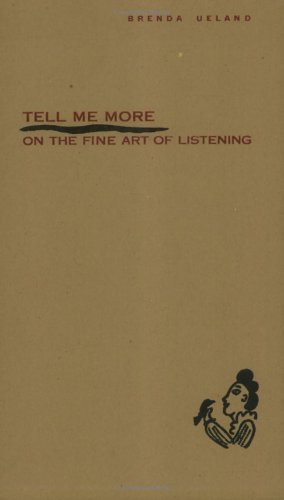
Writer and editor Brenda Ueland, in a wonderful book, Tell Me More: On the Fine Art of Listening, called “… listening is a magnetic and strange thing, a creative force.” She explained, “This is the reason: When we are listened to, it creates us, makes us unfold and expand. Ideas actually begin to grow within us and come to life. You know how if a person laughs at your jokes you become funnier and funnier, and if he does not, every tiny little joke in you weazens up and dies. Well, that is the principle of it. It makes people happy and free when they are listened to. And if you are a listener, it is the secret of having a good time in society (because everybody around you becomes lively and interesting), of comforting people, of doing them good.”
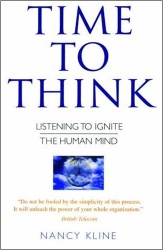
What makes for good listening? Nancy Kline author of Time to Think: Listening to Ignite the Human Mind offers some simple suggestions:
“Adopt this attitude and general behavior as you listen:
- Settle back
- Keep your eyes on the eyes of the person as they speak
- Cultivate fascination with what they will say next
- Achieve a composure that is wildly dynamic
- Do not interrupt
- Trust that not uttering a word is one of the most effective things you can do
- Know that your job is to help the person think for themself, not to think for them
- Remember that the expression of feelings is often part of the thinking process
- Be aware that much of what they say will be a result of your effect on them
When we listen attentively, says Kline, “In the quiet presence of your attention, respect and ease, important things can happen for the person thinking. Fresh ideas can emerge; confusion can dissipate; painful feelings can subside; creativity can explode.”
So, when you sit down with relatives this holiday season, listen well. I’ll bet you are rewarded with some great stories.
Gather Stories of Ancestors With a Family Blog
Biff Barnes
We are always on the lookout for ways to collect family stories. Anyone who has attended one of our workshops or seminars (or read this blog for that matter) knows that we believe stories are the key to writing an interesting family history book. But the best stories aren’t always easy to find and family members we ask to share those they know aren’t always as forthcoming as we might wish. Hence our interest in how to collect those illusive pieces of family lore.
The high tech website Mashable recently described a story catching tool called Storify which will allow the user to,” Pull together content from social networks to create a cohesive story with tweets, posts, photos and videos that maintain their original functionality.” Interesting idea, but maybe not the one most family historians I know are looking for.
A friend passed along a newspaper magazine insert, American Profile, which offered an idea that relies on a more traditional kind of social networking. Stephanie Vozza suggests creating a family blog. This is not necessarily the family history blog that most people in hot pursuit of a missing ancestor might think of. It’s not about gathering data or documenting facts. It’s about keeping in touch.
A generation or two ago keeping in touch wasn’t an issue for most of us. Extended families often lived within relative close proximity to each other. People kept in touch over Sunday dinner at grandma’s house. But with relatives spread all over the map today conversations that were a matter of course don’t just happen anymore.
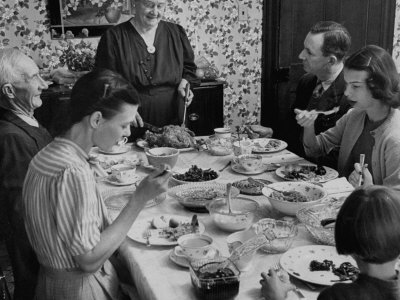
Vozza describes the experience of Jayne Jaudon Ferrer of Greenville, South Carolina who started a blog to which she encouraged family members to submit. Many family members have, she says, contributing recipes, movie reviews and prayer requests. “It’s a wonderful and easy way to stay in touch with loved ones that we may not get to see in person for years at a time,” says Ferrer.
What’s of interest to a family historian seeking to gather stories of ancestors was something Ferrer didn’t anticipate when she started her blog. People began conversations. They shared recollections. “We also post memories of relatives long gone,” says Ferrer, “big family gatherings that happened back when most of the original family members – our grandmother and her eight children were still alive, and family stories that have been passed on down.”
The kinds of stories that might be shared on this kind of blog are exactly the ones that will bring ancestors to life in a family history book. Give it a try for your family.
Click here to read Mashable “Use Social Media to Tell Interactive Stories
Click here to read Stephanie Vozza’s article “Creating a Family Blog” in American Profile
Great Weekend at Atlanta Family History Expo!
Biff Barnes
This weekend Nancy and I participate in the Atlanta Family History Expo held at the Gwinnett Center in Duluth, Georgia. It was our seventh FHE this year. We have had a great time at every one.

The Atlanta Expo offered the between 1000 and 1500 people who attended the two day session two days crammed with opportunities to learn and share ideas about genealogy and family history. There were thirty exhibitors, and 110 classes providing research tips and techniques, technology tools, opportunities to post and publish results, and resources of all kinds. Most of all there was plenty of encouragement and inspiration for the family historian.
I think Ginger Smith, who writes the Genealogy by Ginger Blog, had a fairly typical reaction. She wrote, “This was a good experience overall though because I finally got to see exactly what a conference like this entails and it was very cool to be able to talk about GENEALOGY (and some about technology) for two whole days!!!!”
Nancy and I had the opportunity to teach two classes twice each: Family History Books – Editing, Design and Publishing, and A Good Read – Make Family History Books Exciting. We always enjoy the opportunity to teach. It’s fun to share what you know with others.
What’s even more fun at conferences like this is that we get the opportunity to talk with individuals about their own family history book projects. We spoke with people at all stages of the author’s journey from gathering ideas to choosing a printer. Our message was always one of encouragement. Anyone who wants to create a family history book can do it. We’re happy to offer advice and help.
If you haven’t had the opportunity to attend a Family History Expo or another big genealogy conference I’d encourage you to check into the possibility of doing so in 2011. I am sure you will find it both worthwhile and a lot of fun.
Click here to read Ginger Smith’s post on the Atlanta FHE
Click here to visit the Family History Expo site.
Is a Writing Group for You?
Biff Barnes
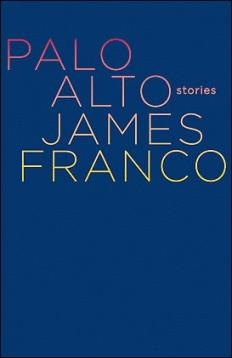 Writing can be a solitary task. Sometimes it is difficult to get a good perspective on the manuscript you’re producing. One solution is to seek out other writers and join with them in a writing group or workshop.
Writing can be a solitary task. Sometimes it is difficult to get a good perspective on the manuscript you’re producing. One solution is to seek out other writers and join with them in a writing group or workshop.
A recent interview between Kate Bittman of the New Yorker and actor James Franco, star of films like Milk, Pineapple Express and Howl. Their conversation which appeared in the magazine’s online Book Bench focused on Franco’s newly released story collection Palo Alto.
Franco said he had written for years, but had only recently begun showing his work to others. When asked, what was the best advice about writing he had ever received, he said, “I suppose it’s finding good mentors and good readers; people who will give you a good sense of what you’ve written, because you can’t always assess it on your own.”
About five years ago Franco discovered writer’s workshops when he could feedback from fellow writers about how to sharpen his writing skills.
“Once I started enrolling in writing workshops and had people reading my work, it immediately gave me a new perspective," he said. "I was suddenly writing to communicate with others, which made all the difference. I no longer cut corners. I could no longer judge my work by its potential. Instead, I had to listen to how it was being perceived by others. I could no longer fool myself in isolation.”
The advice and support provided by members of a writer’s workshop can make the difference in whether a project gets finished or not. It can almost certainly make the manuscript you ultimately create better.
You can locate online groups or groups in your neighborhood with a quick Google search.
Click here to read Kate Bittman’s interview with James Franco.
Encouraging People to Share Their Stories
Nan Barnes
We have recently had inquiries from several people who were interested in creating books that were community projects involving multiple contributors. Here's the advice we've given these people.
We have met a number of people like you who had great ideas for community book projects, but they never seem to get them off the ground. Why is that? Here are the conclusions we have drawn:
1. You cannot ask non-writers to write. Imagine this: I am not very athletic, yet each year when I visit my uncle he wants me to play golf with him. Golf! That takes years to learn how to play well. If I attempt it, I know I will fail, so I politely refuse. The same applies to writing. It may be your beloved hobby, but to others it is as specialized as golf, a game they do not play. The solution? Ask for their knowledge and stories, but don't ask them to write. Plan to interview these contributors with a digital recorder, just as journalists have done to get the story for many years.
2. The rewards are not clear, or are not powerful enough. It is human nature to ask, What's in it for me? Too often you are the only one who benefits, and yet you want something, either time or effort, for nothing in return. The solution? Create a reward. If you are doing this as a for-profit venture, pay for each story. Non profit? Sometimes even a token payment, such as a gift card for the bookstore, or perhaps a donation to their favorite charity in their name, will make it worth their while. Often, simply offering to get together for a cup of coffee is a good enough "social reward" - people love to get out of the house, and you promise to make it fun for them. The promise of seeing their story in the finished book, however, does not seem to be an incentive, as it is too abstract, at least until the book is actually finished. At that time, they may be very interested in purchasing the book, or receiving a free copy as thanks for contributing.
3. The scope of the project is unknown. Too often, the person who wants to do the community book has "a great idea" but no plans beyond gathering the stories. In their enthusiasm, they pitch the idea poorly to others, who are not impressed. These contributors feel they are being drafted, and they doubt the project will succeed, perhaps rightly so. If the author does not prove that she/he has a good plan, why should they get involved? The solution: Make a plan, and pitch the plan effectively. They will want to know who the other contributors are, and how many stories are going into the book. They will want to know about your plan for organizing the book, your schedule for completing it, and how you intend to publish and distribute it. The money issue must be addressed: are you making a profit, and if so, will they be compensated? In addition to all the information about the book as a whole, they will need to know what you want from them in particular. Give definite guidelines for the length and content of the story. It is very reassuring to hear that there are limits, such as "I just want to record you telling your story for 15 minutes."
4. Relationships matter more than you imagine. They say that all transactions take place in a social context. When people listen to your book project proposal, they will consider their relationship with you before they decide on their interest in your book. Friendships have a loyalty factor, as in "please do this as a favor for me, because you are my friend". Acquaintances do not have any such obligation. They will listen to your proposal, and they will use their reason to gauge the value of the exchange; how much effort will this take on their part, and and how important their contributions are to your plans. That is why it is important that your sources like you, and want to help you, on a personal level. The contributors must have a "good feeling" about the author and the project for it to succeed.
Ultimately, I think that authors who want to do such a book have to take full responsibility for it. They need to accept the role of project manager, as well as author, and they need to be realistic about the relatively small part that others will play. When you ask others to contribute to a book, they will respect your efforts more if they know you have already shouldered the greatest share of the work, and expect relatively little of them.